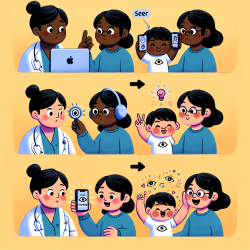Introduction
In recent years, there has been a growing interest in understanding the health disparities faced by American Indian and Alaska Native adolescents. A pivotal study titled Sleep Problems and Health Outcomes Among Urban American Indian and Alaska Native Adolescents sheds light on how sleep issues are intricately linked to various health outcomes in this demographic. This blog post aims to provide practitioners with insights from this study to enhance their skills and encourage further research in this critical area.
Key Findings from the Research
The study conducted a cohort analysis involving 142 urban American Indian and Alaska Native adolescents. It revealed that shorter sleep duration is significantly associated with increased symptoms of depression and anxiety, a higher likelihood of alcohol and cannabis use, elevated diastolic blood pressure, and increased glycosylated hemoglobin levels. Moreover, social jet lag was linked to higher systolic blood pressure at follow-up.
These findings underscore the importance of addressing sleep as a modifiable risk factor to improve health outcomes in this population. The study suggests that culturally responsive interventions targeting sleep could be a novel approach to promoting health equity among American Indian and Alaska Native adolescents.
Implementing Research Outcomes in Practice
Practitioners working with American Indian and Alaska Native adolescents can take several steps to implement the findings of this study:
- Assessment of Sleep Patterns: Incorporate sleep assessments into routine health evaluations. Use both subjective and objective measures to understand sleep duration, efficiency, and disturbances.
- Culturally Responsive Interventions: Develop interventions that integrate traditional practices and values with evidence-based sleep treatments. Collaborate with community leaders to ensure cultural appropriateness.
- Education and Awareness: Educate adolescents and their families about the importance of sleep for mental and physical health. Provide resources and strategies to improve sleep hygiene.
- Policy Advocacy: Advocate for policies that support healthy sleep patterns, such as later school start times, which align better with adolescents' biological sleep needs.
Encouraging Further Research
While this study provides valuable insights, there is a need for further research to explore the mechanisms linking sleep and health outcomes in American Indian and Alaska Native adolescents. Future studies could investigate the role of environmental factors, such as urban living conditions, and their impact on sleep and health. Additionally, research could focus on developing and testing culturally tailored sleep interventions to determine their effectiveness in this population.
Conclusion
The findings from the study on sleep problems and health outcomes among urban American Indian and Alaska Native adolescents highlight the critical role of sleep in influencing various health domains. By implementing culturally responsive interventions and advocating for supportive policies, practitioners can contribute to reducing health disparities and promoting health equity in this underserved population.
To read the original research paper, please follow this link: Sleep Problems and Health Outcomes Among Urban American Indian and Alaska Native Adolescents.










